Fleabag: Six things to know about the original play
- Published
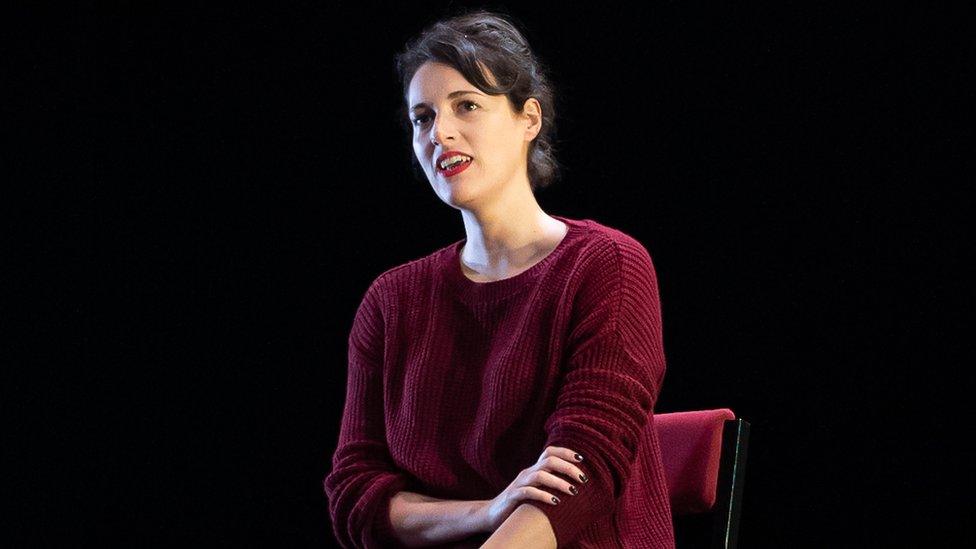
The play is being broadcast across cinemas in the UK next month
Fleabag must have sounded like an odd prospect on paper when it was first performed in 2013.
A monologue about an unnamed woman with a considerable sexual appetite who runs a guinea pig-themed cafe while mourning the death of her best friend is an unconventional premise to say the least.
But the TV series which the original play birthed has since become hugely successful and made a bona fide star out of its creator Phoebe Waller-Bridge.
The second and final series concluded earlier this year and now Waller-Bridge is back in the West End performing the original play. "As a hot ticket, it's on a par with Harry Potter, as high on the list as Hamilton," wrote Dominic Cavendish in The Telegraph., external
It's a fair assessment - the press night on Wednesday evening was an A-list event. Cast members from the TV show like Andrew Scott (the "hot priest") and Fiona Shaw rubbed shoulders with Oscar-winner Rami Malek, 6 Music presenter Lauren Laverne and journalist Caitlin Moran.
But it's the fans queuing at the stage door every night to meet Waller-Bridge who are the real testament to just how much the show has connected with audiences on a deep, emotional level. Young women in particular saw a lot of themselves in Fleabag, and grapple with the issues surrounding dating and feminism raised by the show.
For fans who don't have tickets, Fleabag is also being broadcast live in cinemas on 12 September and it could be the last chance to see Waller-Bridge play her most famous role.
Here are a few things to know about how Fleabag differs on stage and screen.

1. The core storyline is the same as the first TV series
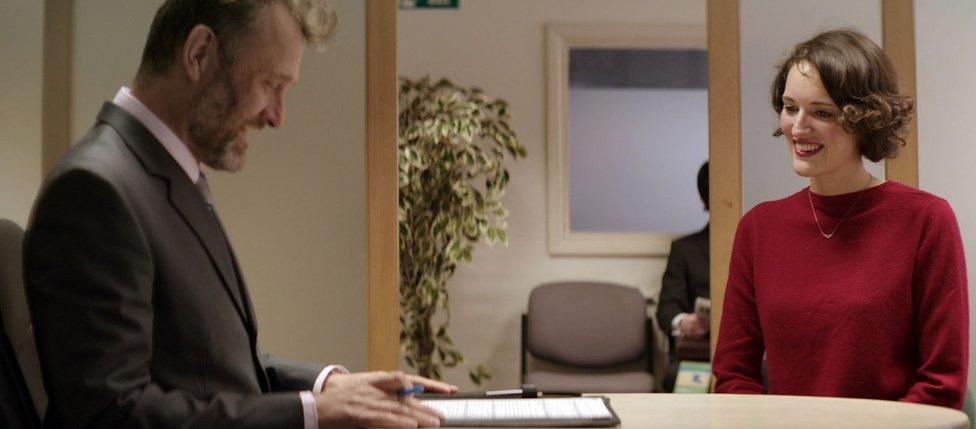
The opening scene of the play has similarities to a scene in the TV series with Hugh Dennis
Ironically, considering the theatre show came first, those who have watched Fleabag as a BBC series will feel like they've had several spoilers for the play.
Whether it's the dates Fleabag goes on, the interactions she has with her family, or the underlying grief and guilt she feels about the death of Boo, there won't be many surprising twists for Fleaophiles.
"After the TV show, the play felt like going to a gallery and looking at the artist's sketchbooks," said Kate Wyver in The Guardian., external "The show is just so much more developed, so the play can't help but feel a little disappointing."
"I liked seeing the original source material," added Laura Snapes in the same article. "But the play was originally such a bolt from the blue. If you see it now, you're always aware: that's Phoebe Waller-Bridge. When it's freighted with the phenomenon, it doesn't work."
2. There's no hot priest
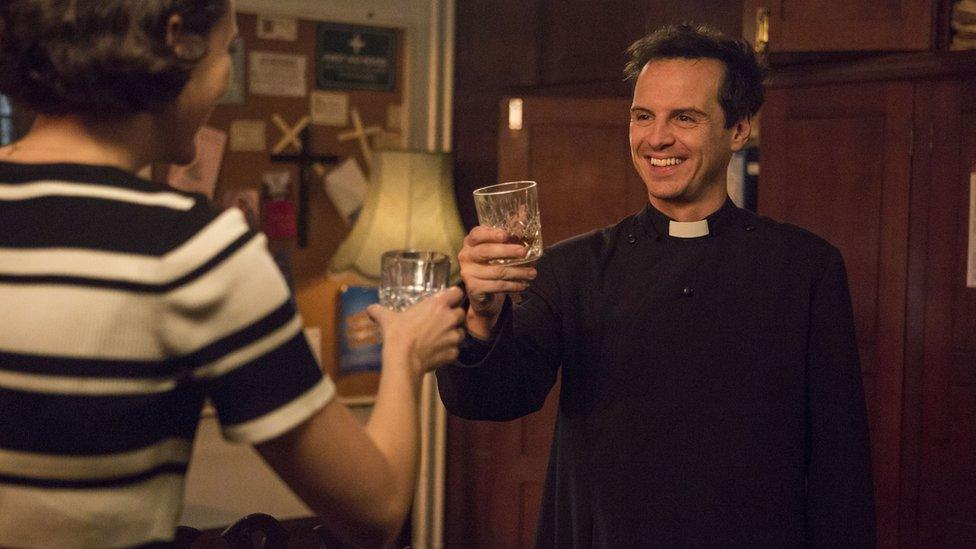
Andrew Scott played the Hot Priest in the second series of the TV adaptation
The second series of Fleabag focused on the lead character's relationship with a priest, played by Andrew Scott. The pair's relationship was the focus of scrutiny from fans and critics alike.
"Why are we so horny for Fleabag's Hot Priest?" asked The Huffington Post, external in one of many, many think pieces about the storyline.
"The real bedrock of [series two] was tied up with the idea of religion," Waller-Bridge told BBC News earlier this year. "I was starting to write jokes about perspectives on the Christian faith and Catholicism, and that bled into the show.
"I liked the idea of Fleabag meeting her match in someone with the same intelligence and wit she has who leads a completely different life."
Sadly, however, the hot priest is nowhere to be seen in the stage show. While some jokes and plotlines from the play are sprinkled through the second series (such as Fleabag's sister's disastrous haircut, external), the central storyline involving the hot priest was entirely new and written specifically for TV.
There was only ever meant to be six episodes of Fleabag, which is why the play has far more similarities to the first series than the second.
3. But there are still some surprises in the stage show
Many of the jokes in the play haven't featured in the TV series, so there's still plenty to enjoy with the stage version.
But that also applies to some of the more heart-breaking elements of the plot.
"There's one emotional absolute gut-punch in the stage version that - presumably having been deemed just too upsetting for telly - may be new to much of the audience," noted Holly Williams in The Independent., external "Guinea pig lovers be warned: it destroyed me."
4. The staging is minimal, but effective
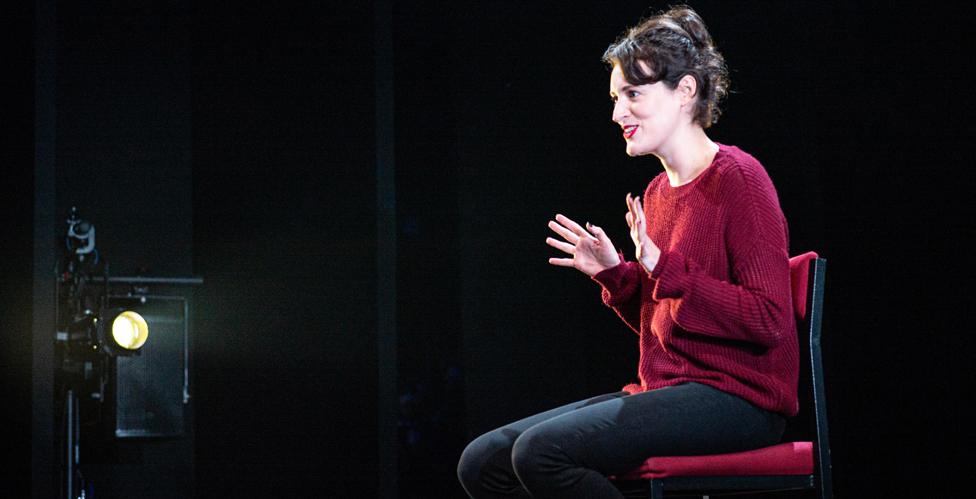
A monologue show in the West End is a pretty rare event, particularly in a large theatre space, and its success is reliant on a powerhouse performance from a single actor.
Speaking about seeing the play in the Wyndham's Theatre, Williams added, external: "She probably wouldn't have written this kind of show for such a grand old space. It inevitably feels rather small, just Waller-Bridge sat on a tall stool on an empty stage."
Although Fleabag darts around from her cafe to job interviews to taxi rides to dates, those surroundings are left entirely to the theatre audience's imagination as Waller-Bridge barely shifts from the tall stool she's sitting on for the 65-minute duration.
The only aides are the changes in lighting and a few audio clips of some of the other characters, to help viewers with the different scenarios.
5. The "fourth wall" dynamic is different
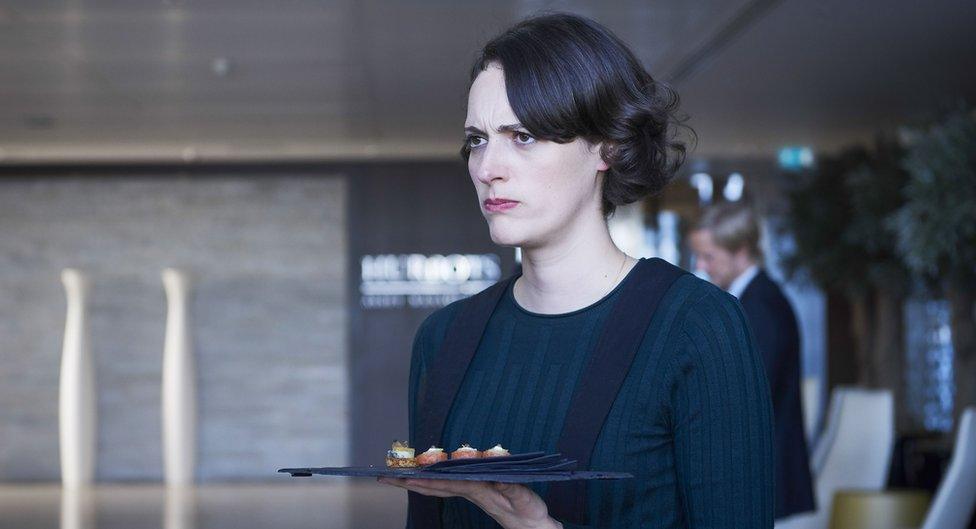
A key element of the TV series was when Fleabag "broke the fourth wall" to speak to the viewer directly, adding in-jokes and her own analysis to the situation she was in.
The play is different, insofar as Fleabag is effectively addressing the audience for most of the show, but she does still clearly separate the moments where she's speaking to another character. There are benefits and drawbacks to the slightly different dynamic she has with the audience on stage.
"Delivering a manner of monologue - she does many voices, and there is disembodied dialogue at certain moments - Waller-Bridge shows herself to be skilled at story, deadpan comedy and one-liners" wrote Craig Simpson of the Press Association.
"Added to this is a stunning ability to mime and do impressions which sets the stage show apart from the restrictions of a TV show, where her sudden comic personifications become scenes and other characters, actors with faces of their own."
6. There's just as much sex
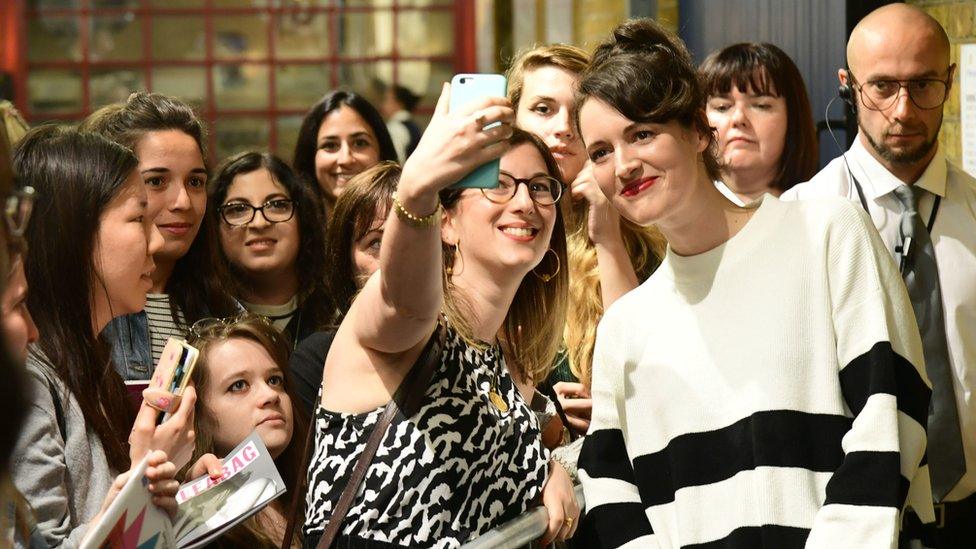
Fans have been queuing up to meet Waller-Bridge every night
From literally the first scene of the first TV series, it was clear Fleabag wasn't a show to watch with your family. But that is partially what has driven its appeal.
While the impact of porn on young people felt like more of a hot topic in 2013 than now - other elements of the show haven't dated, and if anything feel more relevant today.
"I now wince a little at all the reviews of its original run - mine included - describing it as filthy, as if female sexual desire was inherently unclean," acknowledged Natasha Tripney in The Stage., external
"The show would never have achieved quite such a level of success if it were simply a collection of gags about anal sex and [pleasuring herself] over Obama. It's subtler and smarter than that, incisive about self-sabotage, grief and the endless pressures women put upon themselves."
- Published15 August 2019

- Published9 April 2019
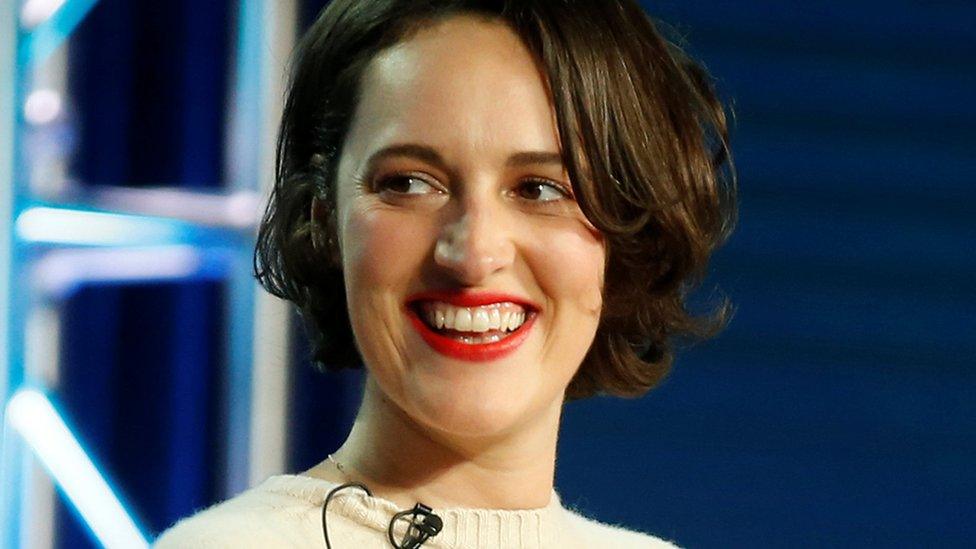
- Published3 March 2019
